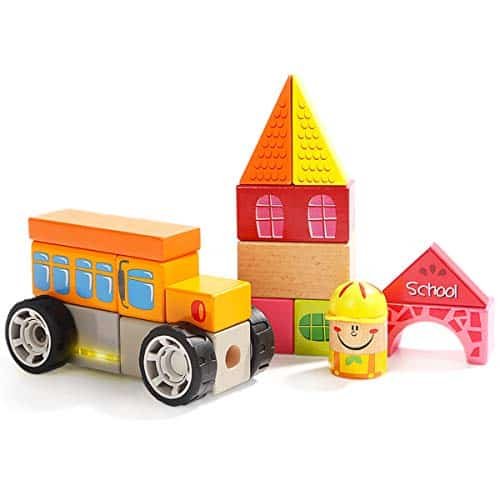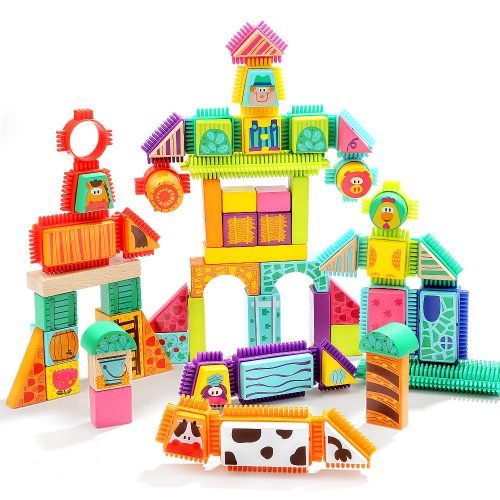
Wooden toys offer several features that contribute to their safety compared to some plastic toys:
Reduced risk of harmful chemicals: When sourced responsibly and finished with non-toxic paints and varnishes, wooden toys have a lower chance of containing harmful chemicals like Bisphenol A (BPA) and phthalates, which can be present in certain plastic toys and pose health risks to children.
Lower choking hazard: Wood generally splinters less than plastic, reducing the risk of small, detachable pieces that could pose a choking hazard for young children who still put toys in their mouths.
Natural antimicrobial properties: Studies suggest that wood possesses natural antimicrobial properties that may inhibit the growth of bacteria and viruses compared to some plastics, potentially reducing the spread of germs on the toy surface.
Potential for customization: With wooden toys, you can often personalize them with paints, stains, or natural embellishments. This allows you to choose non-toxic options and avoid potential chemicals used in pre-painted plastic toys.
Temperature regulation: Wood naturally regulates temperature, unlike some plastics that can get very hot in sunlight or cold to the touch. This can make them more comfortable for children to handle.
Sustainable sourcing: By choosing wooden toys from sustainably managed forests, you can avoid concerns about deforestation and unethical practices associated with some wood sources, ensuring the safety and well-being of communities involved in production.
However, it’s important to remember that not all wooden toys are created equal:
Quality matters: Choose well-made toys from reputable brands or artisans who prioritize quality materials and non-toxic finishes. Be wary of cheaply made wooden toys that might use poor-quality wood or finishes with unknown ingredients.
Age-appropriateness: Select toys suitable for your child’s age and development to minimize the risk of improper use or accidental ingestion of small parts.
Regular checks: Inspect wooden toys regularly for any cracks, splinters, or loose parts that could pose a safety hazard and repair or replace them if necessary.
Maintenance: While generally low-maintenance, some wooden toys might require occasional oiling or waxing to maintain their finish and prevent dryness or cracking.
Overall, when chosen thoughtfully and used responsibly, wooden toys offer a safe and healthy alternative to many plastic toys. By prioritizing sustainable sourcing, high-quality materials, and age-appropriate options, you can create a safe and enriching play environment for your child.







